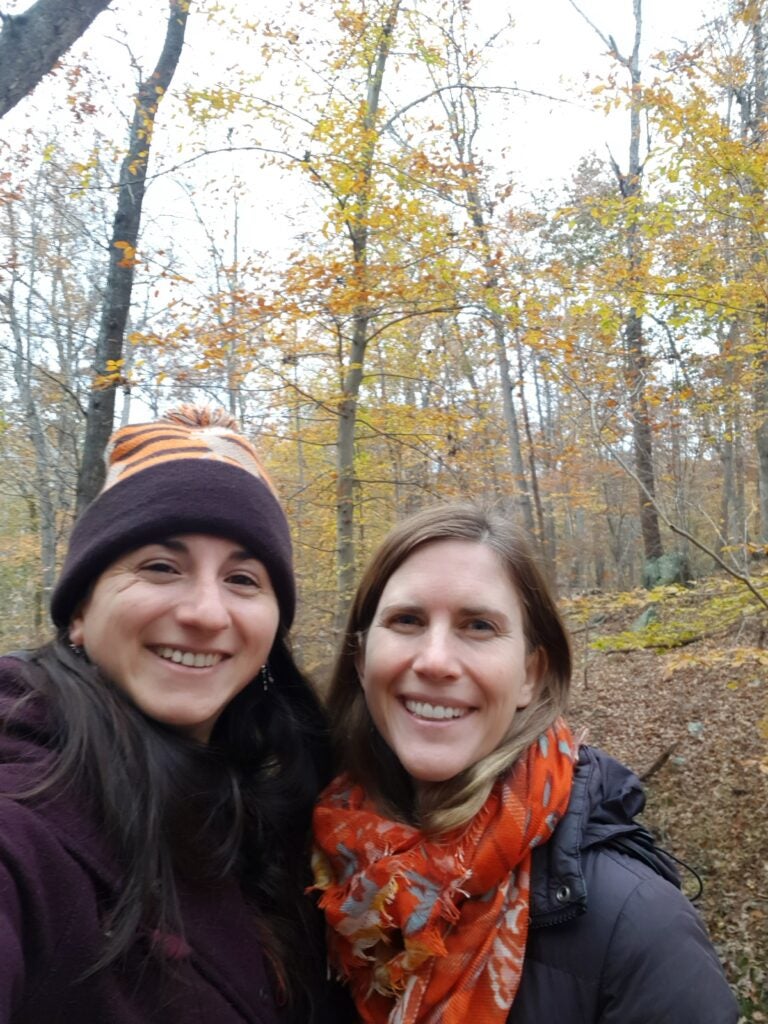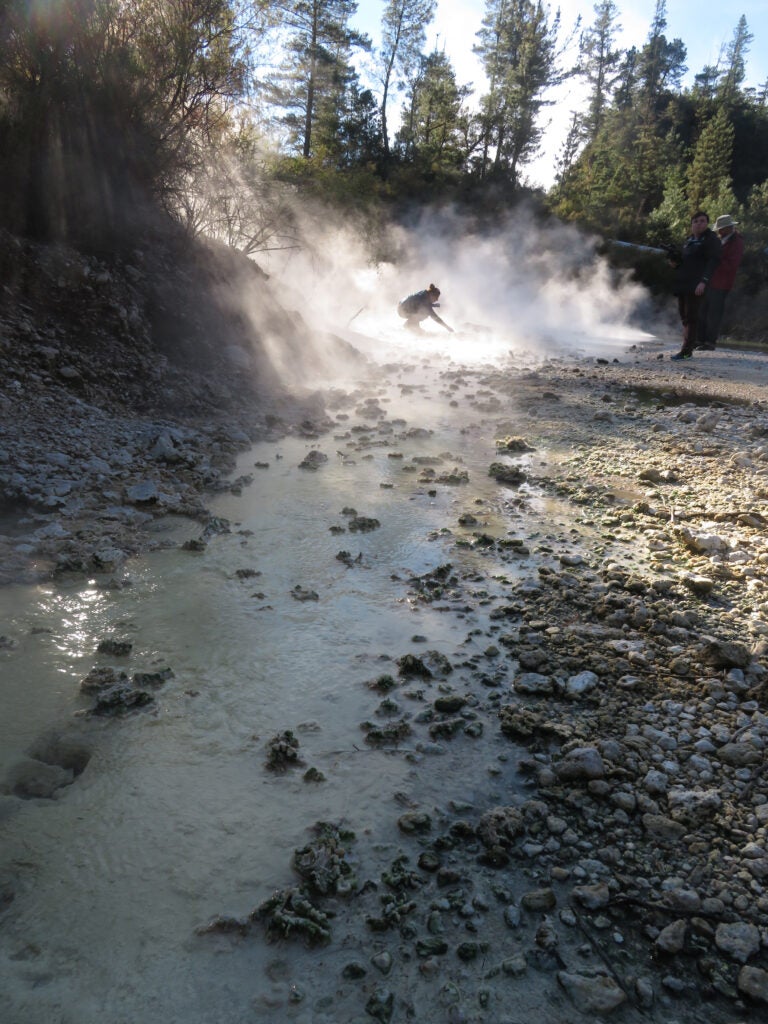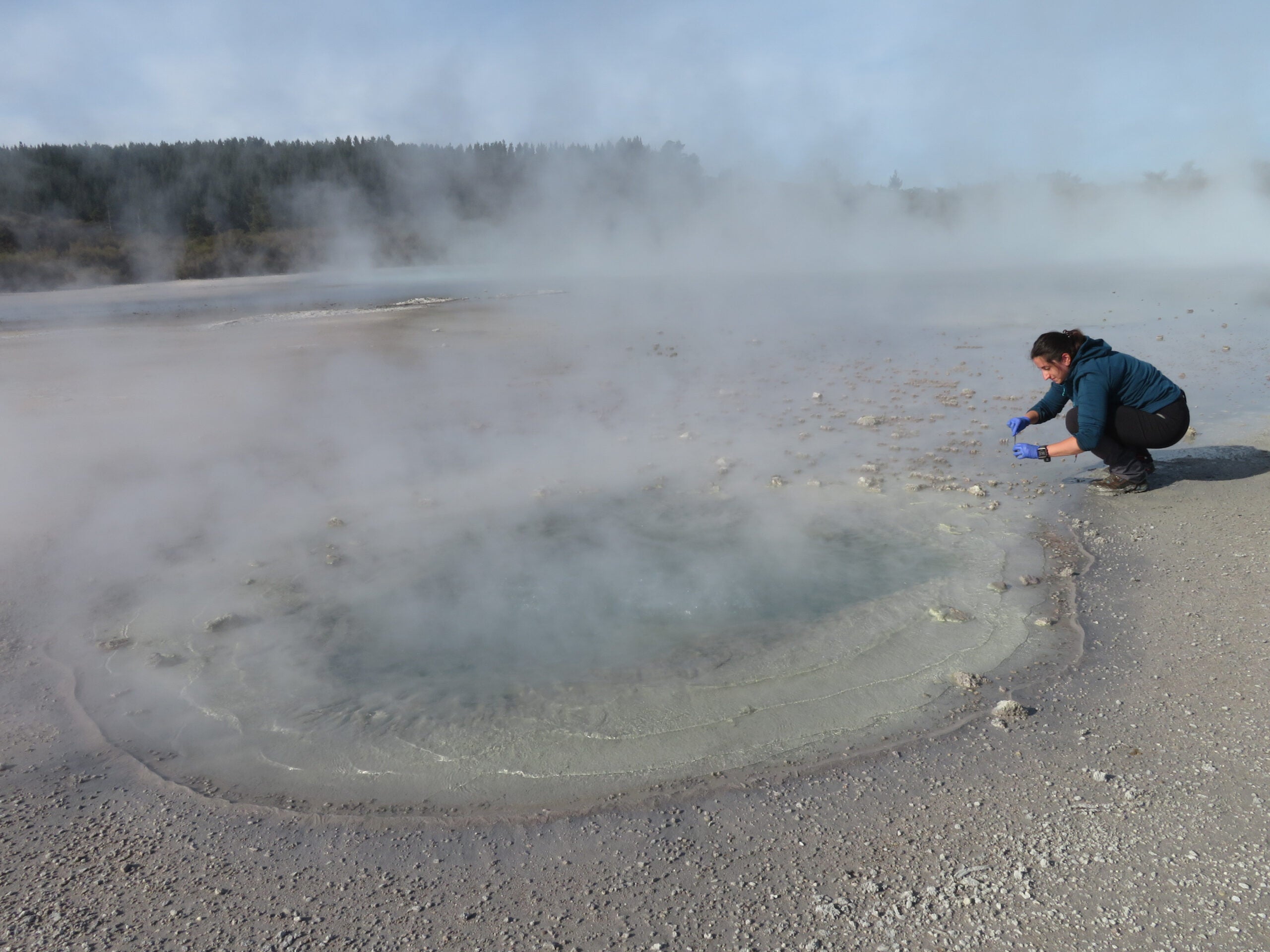Postdoctoral Fellow Maëva Millan and Professor Sarah Stewart Johnson Conduct First-of-Its-Kind Research Searching for Organic Molecules on Red Planet
In a paper published in Nature Astronomy, Georgetown Postdoctoral Fellow Maëva Millan and her advisor, Sarah Stewart Johnson, Provost’s Distinguished Associate Professor in the Department of Biology and Science, Technology, and International Affairs Program, share their findings from the very first “wet chemistry derivatization” experiment performed on Mars, where NASA’s Curiosity Rover landed in August 2012.
“The goal of the Curiosity Rover, and specifically of the Sample Analysis at Mars instrument (SAM) that we have been working on, is to find organic molecules that could potentially be indicators of life to help us understand the past and/or present Martian habitability,” explains Millan. “This experiment was a milestone because this is the first time that the derivatization technique has been employed on another planet and even in space.”
What is Derivatization?

Photo of Millan and Stewart Johnson taken while conducting research, taken by Millan
While earning her Ph.D. at the laboratory LATMOS in France where she worked closely with NASA Goddard, Millan met with Johnson to see if she would be interested in joining the Johnson Biosignatures Astrobiology Lab at Georgetown as its first postdoctoral fellow in planetary sciences. Millan agreed and began working on simultaneous research projects at Goddard and Georgetown.
“I was really excited about these projects and about being the “bridge” between Goddard and Georgetown, so I immediately accepted the offer,” says Millan. “I crossed the Atlantic, relocated to the US, and joined Sarah’s lab only a month after my Ph.D. defense. Although my initial contract was 3 years, I was so happy and excited about the work that I stayed until now, which is 5 years in January.”
The article, titled “Organic molecules revealed in Mars’s Bagnold Dunes by Curiosity’s derivatization experiment,” is the culmination of the research Millan started at Georgetown in 2017 to search for organic molecules on Mars as well as the work she performed at Goddard to help understand Martian data and optimize the future experiments to be done on the Red Planet. It is not only a monumental paper for Millan but a milestone in Martian exploration and in astrobiology.
Millan says that the reason this particular research is so significant is that “it presents the results of the first successful wet chemistry derivatization experiment performed at the surface of another planet.”
Typically, the SAM instrument can extract and analyze organic molecules through pyrolysis, which requires intense heating of rock and mineral samples to release organic compounds. However, some molecules that are key indicators of life such as amino acids and fatty acids cannot be identified through pyrolysis alone.
In their experiment, Johnson and Millan applied a technique called derivatization. Instead of only applying heat to rocks and minerals, the SAM instrument uses chemical liquids in conjunction with pyrolysis to extract organic molecules in a process known as “wet chemistry.”
Although SAM did not detect amino acids or fatty acids, several “derivatized” molecules were found in the analysis, which indicates that this first derivatization on Mars was successful. While the origins of these modified molecules remain under investigation, the detection is proof that the new approach was successful, paving the way for its widespread use.
“Most chemical biosignatures we target at the surface of Mars, other planets and satellites such as amino acids, nucleobases, sugars and lipids require wet chemistry techniques to be detected,” explains Millan. “These results are not only important for Mars and the current research goals of the Curiosity rover, but also for future missions.”
The paper also details how the flight experiment can be optimized to detect molecules that might be missed under standard flight protocols.
Mentorship: More than Molecules on Mars

Millan collecting samples in the field, taken by Kathleen Campbell
After finishing her postdoctoral fellowship next year, Millan will begin as a full-time scientist at LATMOS. She was one of five people selected from almost 200 applicants for a position in the Solar System and Far Universe division. Her research project proposal directly combines the work she completed while working at Georgetown and Goddard — the preservation and detection of organic biosignatures in the Solar System in order to understand the conditions of the emergence of life.
Millan says that she felt fulfilled scientifically and personally while working with Johnson and that the experience “was a huge stepping stone for my career and an amazing experience.”
“From my first day, Sarah treated me like her colleague, introduced me to the right people so I could pursue my projects and did everything to make me feel comfortable and integrated in her lab which smoothed my transition to the US and made me happy to be here,” says Millan. “She is one of the best mentors I’ve had and she taught me that you can do it all: build your dream laboratory from scratch, become a known scientist, a caring teacher and a writer all while managing a healthy work/life balance, which can be quite challenging as a woman researcher.”
“This journey has been one of the most incredible experiences I’ve ever had, and I would not have been able to get this permanent position in France, my dream since I was a little girl, without the incredible and unconditional support of Sarah,” continues Millan.
As part of their work together, Johnson and Millan visited places like New Zealand and Australia to conduct research in planetary analog environments on Earth. Millan was not only able to see some of the most beautiful and remote places in the world from these trips, but also had the opportunity to present her work at conferences, meet other scientists, and “gained enough confidence to pursue my own research ideas.”
Johnson says that Millan helped her build her lab from the ground up and that she learned a great deal from the postdoc.
“Working with Maëva has been an absolute delight — she walked into my lab with the skills, knowledge, and interests of a scientist much further along in her career and from there she has developed world-class expertise in detecting traces of organic molecules on Mars,” says Johnson. “Maëva is an explorer in the finest traditions of Mars science. She is a brilliant chemist and an extraordinary young scholar, and a wonderful person, too. It has been a gift that our paths crossed in this way — she’s the kind of postdoc that makes being a professor a joy!”
